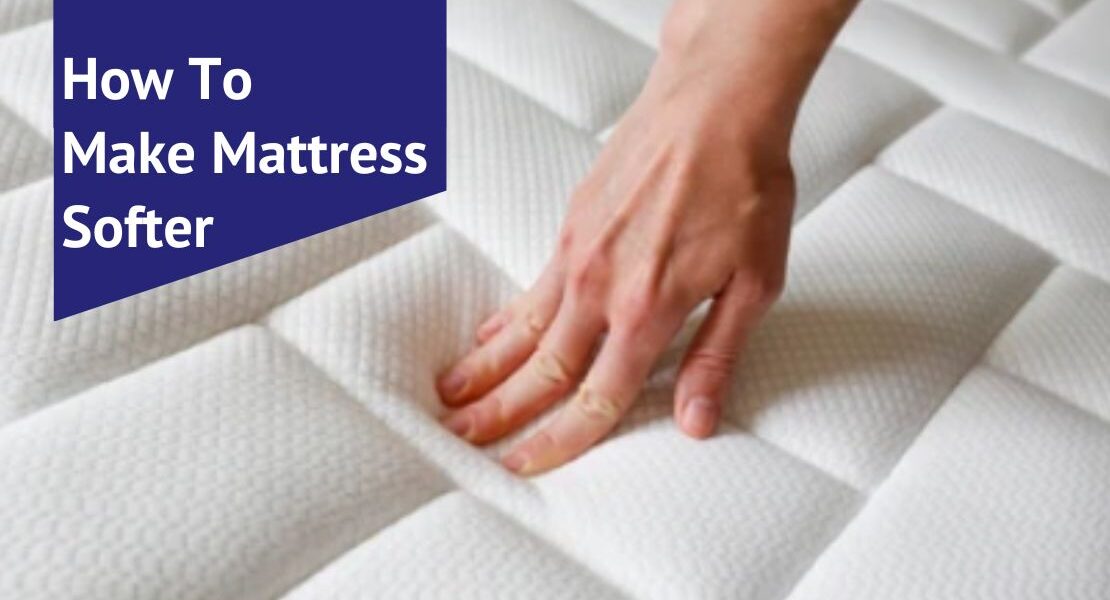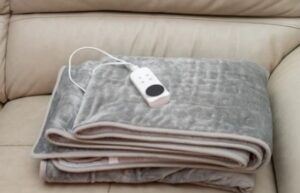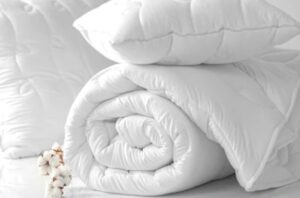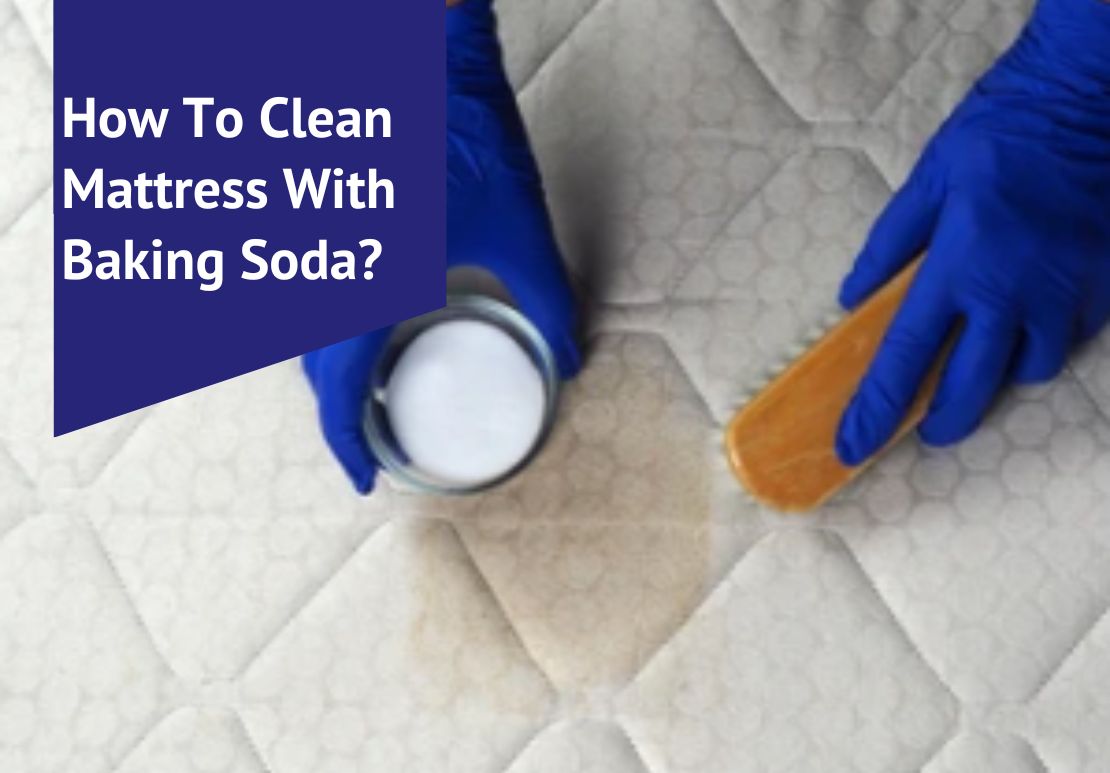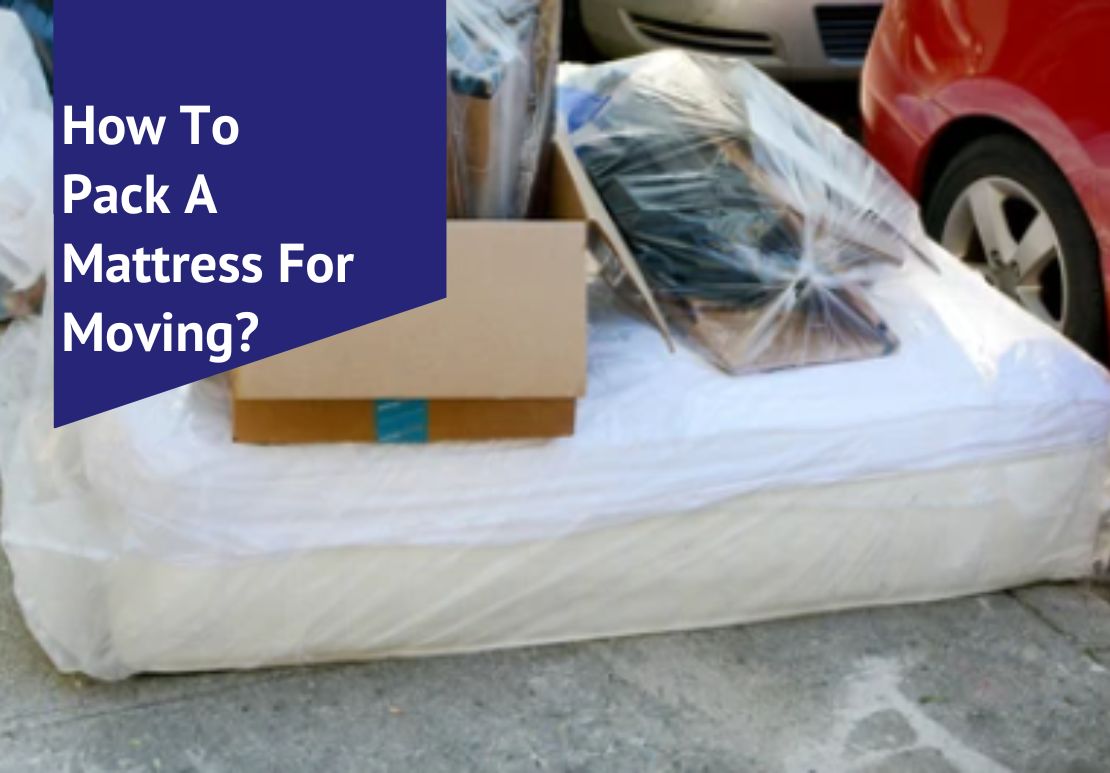Introduction:
Many sleepers face the challenge of a mattress that feels too firm, resulting in restless nights and discomfort. Surprisingly, softening up a hard mattress can often be achieved with a few simple adjustments or additions at home.
This article outlines practical steps to transform an overly firm sleeping surface into a cozy haven for improved rest. Discover solutions inside that promise softer slumber without breaking the bank.
Table of Contents
Key Takeaways
- Adding the best mattress topper made of memory foam, goose down, or wool can significantly increase the softness of your bed and make your firm mattress softer. A great example of this is a foam mattress topper.
- Is your mattress too firm? Worry not; regularly flipping and rotating your mattress helps distribute wear evenly and may lead to a more comfortable sleeping surface over time.
- Checking your bed frame and foundation for damage can improve mattress support, making it feel softer.
- Adjusting room temperature or warming the bed with a heated blanket could make the mattress feel less firm.
- Consider an adjustable mattress that allows you to customize firmness levels for personalized comfort.
How to Tell if Your Mattress is Too Firm?
If you wake up with aches or pains, experience discomfort during the night, or notice visible sagging in the mattress, these are signs that your mattress is too firm.
Ignoring these signs can lead to long-term sleep issues and musculoskeletal problems, so addressing them promptly is important to make your bed feel softer and comfortable.
Identifying signs
Determining whether a mattress is too firm is often the first step toward better sleep. Homeowners must be aware of the telltale signs suggesting their bed may require added softness.
- Morning stiffness or soreness indicates the mattress might not conform well to the body’s contours.
- The appearance of pressure points, resulting in discomfort during sleep, often means the mattress is too hard.
- A lack of sinking sensation when lying down could indicate excessive firmness in a mattress.
- Difficulty getting comfortable or tossing and turning all night also signals an overly firm sleeping surface.
- Experiencing better sleep on other mattresses, like at a hotel or friend’s house, suggests your current mattress may not be up to par with its comfort level.
Risks of ignoring a too-firm mattress
After pinpointing the signs of a mattress that is too firm, it’s crucial to address them immediately. Sleeping on a firm mattress that doesn’t suit your body can lead to restless nights and uncomfortable sleep patterns. Also, make a note of the mattress material when you notice such patterns.
If you constantly wake up feeling stiff or sore, your body may signal that the support system isn’t suitable for you. Overlooking these warning signs not only impacts sleep quality but could also result in chronic pain over time.
Moreover, ignoring the need for a softer sleeping surface might contribute to pressure point discomfort, particularly around the hips and shoulders if you’re a side sleeper. Without proper cushioning, your spine may not align correctly during rest, introducing the risk of long-term back problems.
Additionally, blood circulation could be inhibited by excessive firmness in a mattress, potentially causing numbness or tingling sensations. Acknowledging these risks is important as they underscore the necessity of achieving an appropriate balance between comfort and support in one’s sleeping arrangements.
When to consider buying a new softer mattress
If you find yourself constantly tossing and turning, trying to get comfortable, or if your mattress shows signs of wear like sagging, lumps, or creaks, it could be time to look for a replacement.
A good quality mattress typically lasts about 7-10 years before it starts losing support and comfort. Consider how you’ve been sleeping lately; frequent back pain or stiffness upon waking may signal that your mattress no longer provides the proper support.
If allergies worsen at night or in the morning, your old mattress might be harboring allergens and dust mites, which can often exacerbate respiratory issues.
Mattress technology advances continually offer better sleep solutions tailored to individual needs. If softening measures like flipping your mattress or adding a padded protector haven’t worked effectively, exploring new options becomes essential for quality rest.
A new memory foam topper might bring temporary relief, but purchasing a brand-new bed could provide long-lasting comfort and improved overall health benefits. Make hard mattresses more comfortable by opting for modern designs that suit personal firmness preferences while addressing underlying sleep disturbances with advanced materials designed for maximum coziness and relaxation.
How to make a hard mattress softer?
To make a hard mattress softer, consider breaking it in, flipping it over, or using a mattress topper for added cushioning. Checking your bed frame and foundation for proper support, warming up the mattress, and changing your sleeping positions can also make your mattress more comfortable. To learn more about ‘how to make a firm mattress comfortable,’ keep reading.

Break it in
Breaking in a new mattress can help make it feel softer over time. Regularly using the mattress and distributing your body weight evenly, the materials will gradually adjust and conform to your body shape.
This process is particularly effective for memory foam mattresses and can increase comfort without additional cost or effort.
If you recently purchased a firm mattress that feels too rigid, sleeping on it consistently can contribute to its softening over time. Remember that this method may take several weeks before you notice a significant difference in the overall firmness of the mattress.

Flip your mattress
To make your mattress softer, consider flipping it regularly. This simple task can help distribute the wear and tear on the mattress, preventing it from becoming too firm in certain areas.
By rotating your mattress every few months, you ensure that all parts of the mattress are utilized equally, contributing to a more balanced and comfortable sleeping surface over time.
Additionally, flipping your mattress allows it to adjust and conform to your body’s shape more evenly. This adjustment process can gradually lead to a softer feel as any localized firmness is dispersed throughout the sleeping area.
Use a mattress topper to soften the mattress.
A mattress topper can significantly improve the softness of a too firm mattress. Homeowners can enjoy a softer sleeping surface without investing in a new mattress by adding an extra layer of cushioning, such as memory foam, goose down, or wool.
Memory foam toppers are known for their ability to conform to the body’s shape and provide unparalleled comfort. In contrast, goose down and wool toppers offer a plush feel that enhances overall softness.
Incorporating a high-quality mattress pad can be an effective and budget-friendly solution when adjusting your bed. This addition adds an extra layer of padding and helps protect the underlying mattress from wear and tear.
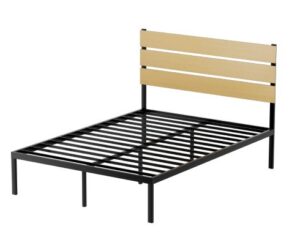
Check your bed frame and foundation.
To maximize the softness of your mattress, it’s essential to ensure that your bed frame and foundation provide adequate support. A sturdy, well-constructed bed frame and a supportive foundation can significantly impact the overall comfort of your mattress.
Over time, wear and tear on these structural components can lead to sagging or uneven support, affecting the feel of your mattress.
Inspecting your bed frame and foundation for any signs of damage or deterioration is crucial. Look out for worn-out slats, broken or loose screws, or weakened box springs. By addressing any issues with the support system of your bed, you can help maintain the optimal comfort level of your mattress without necessarily investing in a new one while extending its lifespan.
Warm it up
After checking your bed frame and foundation, another option to consider softening your mattress is warming it up. Using a heated blanket or adjusting the room temperature can make your mattress feel softer.
Temperature variations can affect how firm or soft a mattress feels, so finding the right balance for warmth and comfort is essential. Additionally, giving your mattress time to adjust to changes in room temperature can also make it feel softer.
Change your sleeping positions.
Switching up your sleeping positions can play a significant role in the comfort and softness of your mattress. Experimenting with different positions can help distribute your body weight more evenly, reducing pressure points and helping alleviate the feeling of firmness.
Sleep on your side or back rather than exclusively on your stomach to see if it makes a difference in how your mattress feels.
Adjusting how you position yourself in bed could be an effective and straightforward way to find relief without investing in additional bedding or accessories. By being mindful of changing habits that may contribute to discomfort, homeowners can experience improved sleep quality without making any financial commitments.
Other Factors to Consider for a Comfortable Bedding
Consider the room temperature and bedding material for a more comfortable sleeping experience. For further insights into optimizing your bedding for ultimate comfort, keep reading.
Adjusting the room temperature and choosing suitable bedding can significantly impact your sleep quality. Read on to discover how these factors can enhance your overall sleeping experience.
Room temperature
Adjusting the room temperature can significantly impact the softness of your mattress. A warmer sleeping environment can help soften a firm mattress, making it more comfortable.
Lowering the room temperature slightly with air conditioning or fans during warmer months may contribute to a softer and more inviting mattress surface.
When using heating or cooling systems, homeowners should be mindful of energy consumption and personal comfort preferences. By regulating the ambient temperature in their sleeping area, individuals have greater control over optimizing their mattresses for enhanced comfort without costly investments.
Bedding material
Investing in a suitable bedding material can significantly impact the comfort of your mattress. Opt for a mattress topper made from memory foam, goose down, or wool to enhance the softness of your bed.
Additionally, consider using a padded mattress protector to add a cushioning layer without replacing your existing mattress. These materials provide added comfort and help adjust the firmness and support of your bed.
Ensuring the appropriate bedding material can make all the difference between restless nights and quality sleep. A well-chosen mattress topper or protector can transform your too-firm mattress into a haven of relaxation, ensuring you wake up refreshed and rejuvenated every morning.
Invest in an Adjustable Mattress
Consider investing in an adjustable mattress to customize your sleeping experience. This type of mattress allows you to modify the firmness and incline, catering to your comfort needs.
An adjustable mattress can easily soften or firm up different sections of the bed to find the perfect balance for a good night’s sleep. Additionally, specific models offer features like massage options, lumbar support, and customizable settings for temperature regulation.
With an adjustable mattress, it’s possible to make precise adjustments that enhance overall comfort and support while addressing specific issues, such as back pain or discomfort caused by a too-firm surface.
Some models even come with separate controls for each side, allowing partners with different preferences to enjoy personalized comfort without compromise.
Conclusion – To Make A Firm Mattress Into A Soft Mattress
To conclude, making a mattress softer involves several practical strategies. Swapping for a softer mattress or using a specialized mattress topper are effective solutions. Rotating or flipping the mattress, adjusting the room temperature, and trying different sleeping positions can also bring noticeable improvements in comfort.
Additionally, giving your current mattress time to adjust is a cost-effective way to achieve softness without spending extra money. By considering these various methods and factors – from breaking it into investing in an adjustable mattress – homeowners can easily attain a softer, more comfortable bed for better sleep quality without needing to purchase an entirely new one.
Frequently Asked Questions
How can I make my mattress softer?
You can make your mattress softer by adding a mattress topper, using a foam pad, or adjusting the firmness if possible.
Can I use pillows to make my mattress softer?
You can use extra pillows or cushions strategically placed under the fitted sheet for added softness and support.
Is it possible to adjust the firmness of an existing mattress?
Some mattresses allow adjustment in firmness through built-in features such as air chambers or customizable layers.
What materials should I look for in a mattress topper to increase softness?
Look for materials like memory foam, latex, down alternative, or fiberfill, which provides additional softness and comfort.
Are there any DIY methods to make a mattress softer?
DIY options include layering blankets or comforters on top of the mattress and utilizing quilted pads or egg crate foam for added plushness.

